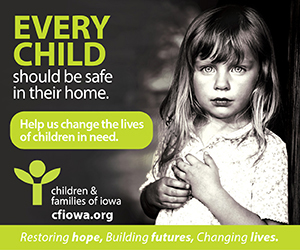Winery owners find encouragement in numbers

After years of planting, pruning, mixing and fermenting, two Newton-area families hopped on the winery bandwagon this year, contributing to a statewide boom in the industry. Though many businesses see increased competition as a threat, most winery owners subscribe to the philosophy of “the more, the merrier.”
Paul and Jean Groben opened Jasper Winery in June with five wine varieties, the fruits of their six acres of grapevines and years of work. Steven and Collette Hill’s Sugar Grove Grange and Gathering Place opened Oct. 29 as a location they hope will be a country retreat that inspires tranquility and togetherness.
With just six miles separating their wineries, the two families are working together to create a destination that provides wine, cheese and entertainment to wine connoisseurs, curiosity seekers and weekend travelers in Central Iowa and throughout the state.
“If you’re coming from Des Moines or Ames, you’re more apt to come to a location where you can visit two wineries,” Jean Groben said. “As more wineries come on board in Central Iowa, we hope to develop a wine trail and people can go from one winery to the next. It gets people out into the rural areas and we can help each other.”
The Grobens planted about 60 grapevines on their rural Newton farmland in 1999 as an addition to their existing garden. They claim they knew nothing about grape growing at that point, and Jean says they were “probably pretty naïve.” Their first batches of wine, produced in the basement of their home, were poured down the drain.
“I guess we got the bug after that and decided to start a commercial winery,” she said.
Over the next several years, they tended to their growing vineyard, imported pricey Italian-made equipment and purchased California grape juice to supplement their harvest. They gutted and renovated a building near Maytag Corp. headquarters that they rent from the city of Newton, which now includes tasting and fermentation rooms.
In the meantime, their son Mason also got the bug and enrolled at the University of California, Davis where he earned degrees in viticulture, the science of grape growing, and enology, the science of winemaking. In between stints at wineries in New York, California, New Zealand and Australia, he has served as a consultant to his parents.
“We’re on the phone quite a bit when I’m not here,” Mason said. “I need to make sure they’re doing everything right so when I come back everything’s not screwed up.”
During the winter and spring, they produced five wines – two whites, two reds and a rose – with Mason working on a third red wine for next year. He has also introduced barrel fermentation at the family winery to add a “toasty oak flavor” through fermentation and aging.
“Everywhere I go, I work with different varieties and see various techniques,” Mason said. “Definitely everything I do is a result of what I’ve seen, and I make them work here at home.”
Along with retail sales to winery visitors, the Grobens are beginning to establish a wholesale wine business, with their wines available at several stores in Newton, which they see as a great opportunity for future growth.
They will continue to add to their vineyard, which can be quite costly. Iowa State University Extension says it costs $3,000 to $5,000 per acre the first year to establish a vineyard, and full production of approximately 3 to 4 tons per acre starts around the fifth year. It takes about nine years to pay the start-up costs and begin to net a return of $1,500 to $2,000 per acre per year.
“Next year, more of our vineyard will be in production and our yields will be greater,” Jean Groben said. “I think it will be a long time before we’re really able to have 50 percent of our juice from our vineyard.”
A $1,000 ton of wine grapes should produce approximately 150 gallons of wine, or 750 bottles at an average price of $10 per bottle, or $7,500. Start-up costs are estimated at $250,000, though gross revenues for a native winery and vineyard in Iowa will run approximately $30,000 per acre per year.
Steven and Collette Hill did not have dollar signs in mind when they first planted grapevines in 1999, but did so rather because of Steven’s concern over sustainable agriculture and his desire to find the best way to use their 120 acres of rolling land.
“It started as an interest in developing our land, and as time went on, and then through our involvement with the Iowa Grape Growers Association, we decided that creating a value-added product would be more beneficial,” said Collette Hill.
They renovated the 130-year-old Sugar Grove Grange building after relocating it onto their rural Newton property. With wine production in the basement, the main floor consists of a tasting room and a gathering place, which Collette says has been booked for five parties in December with interest for several wedding rehearsal dinners and anniversary parties in the spring. Works by Iowa artisans are also available for purchase at the winery.
“I think that’s going to be a part of the business that’s really going to grow because it’s just a unique setting and it’s quiet and tranquil,” Collette said. “Having the wine available is nice, but my part of it is very much in hospitality.”
Without a wine expert in the family, the Hills hired a full-time vineyard manager and full-time winemaker to work their 12 acres of grapes and continue production on their wines.
The Hills’ two sons have been a part of the business and its start-up. Nate, 13, will be the winery’s Web site designer, having taught himself programming and Adobe Photoshop skills. Jacob, 9, has shown an interest in gardening, which has inspired his parents to create a children’s garden next summer.
The two families have been part of an explosion in the Iowa wine industry over the past five years. Prohibition from 1919 to 1933, the Armistice Day Blizzard in 1940, and the extensive use of a corn herbicide that can damage grapes all contributed to the decline of the Iowa grape industry in the first half of the 20th century. By 1999, the state had only two native wineries and approximately five wine-grape vineyards.
Dozens of Iowans joined the grape-growing industry following an initiative led by three winery owners to encourage more people in the state to grow grapes. Iowa now has 25 wineries, with five more slated to open in 2005. There are currently 236 wine-grape vineyards in the state, and White expects there to be 275 by the end of next year.
“The typical winery and vineyard person is 50-plus years of age, highly educated, has made a small stash of money, they’re professional, and now they’re going to take some of that money and invest it in something they like to do,” White said. “Often they’re looking for a way to augment their retirement fund.”
Despite the dramatic growth of the wine industry within the state, White said Iowa is about five to 10 years behind other Midwestern states. According to the most recent statistics available to him, there are 52 wineries in Missouri, 42 in Illinois, 30 in Wisconsin, 12 in Minnesota and nine in Nebraska.
And though Iowa’s wine industry is growing at a faster pace than those in surrounding states, White anticipates a shakeout, with about 30 percent of wine-grape vineyard owners leaving the business after finding that grape growing is simply too much work. The wineries, he said, will likely continue to move forward.
“I think the huge, huge growth that we’ve seen in the last four years we probably will not see again,” White said. “It was like everybody caught on and away they went.”






